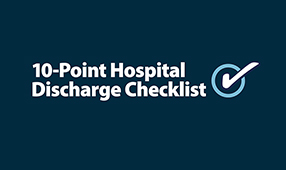Even with insurance coverage, dental and vision care often comes with a big sticker price. But it doesn’t have to be as expensive as you think. Here are 10 tips to help you get the most out of your dental and vision dollars.
5 tips to save on vision costs
More than 165 million people in the U.S. wear eyeglasses and/or contact lenses, according to The Vision Council. In fact, Americans are shelling out an estimated $26 billion annually on vision exams and accessories. The good news: Quality eyewear doesn’t have to cost a fortune.
1. Shop online. 1800contacts.com and zennioptical.com are just a couple of the many sites selling generic frames, eyeglasses and contact lenses online. Zenniopitcal, for example, offers generic frames and lenses with anti-scratch coating and UV protection for as little as $6.95—compare that to the average eyeglass cost of $250. Understand, however, that there’s no guarantee they’ll fit. “When you go through a professional, they do quite a few measurements on your eyes,” says Ed Greene, chief executive officer of The Vision Council. “That’s not an option online.” You will also have to adjust the arms and nose pads yourself for a custom fit—not an easy task for an amateur. Boxed contact lenses, on the other hand, should be the same no matter where you buy them. Go online and you’ll save an estimated 10-40% off the in-store price.
2. Keep your old frames. Just because you have a new prescription doesn’t mean you need new frames. Most eyeglass retailers will put new lenses in old frames. Keeping your old frames may not make you feel chic, but it could end up saving you a serious chunk of change.
3. Take advantage of your insurance and member benefits programs. Most companies offer vision insurance, which includes substantial coverage for exams, lenses, frames and contact lenses, explains Greene, and sometimes discounts for special features, such as UV coating, anti-reflective coating and lens tinting.
4. Discount shop. Sites like AllAboutVision.com offer discount coupons, free trial certificates and other money-saving offers on eye care products and services, which are redeemable with retailers and eye care professionals. Costco is also an option for those who want to buy their glasses in a physical store, but don’t want to pay a premium price.
5. Use your HSA/FSA. In addition to the tax perks you get from taking advantage of these spending plans, they can be a useful way to sock away money for a pair of replacement lenses—a much better option than rolling over any unused dollars back to the government at the end of the year.
5 tips to save on dental costs
The key to keeping dental costs down: Don’t neglect your teeth! Experts agree that early attention to problems can mean the difference between minor work, such as filling cavities, and expensive procedures like root canals, crowns, bridges and oral surgery.
1. See a dentist at least every 6 months. “More than 90% of all dental problems are totally preventable,” says Sally Cram, D.D.S., practicing periodontist in Washington, D.C. and consumer advisor for the American Dental Association. “The key to prevention, of course, is having regular checkups.” Most dentists recommend professional cleanings twice a year, but if you’re prone to getting cavities, have a history of gum disease or if your teeth love plaque, you may need to visit your dentist more frequently.
2. Take care of your teeth at home. Experts agree that optimal home care is key to maintaining the health of your teeth and gums between checkups. Brush twice a day, floss before bed and ask your dentist for ways to improve on your home care. What you eat plays a role, too. Cram recommends eating a balanced diet featuring plenty of fruits and vegetables, calcium, and vitamins C and D—and avoiding sweets. If you eat a lot of carbohydrates and sugary snacks, bacteria will build up in your mouth, ferment the carbs and create acid, and that eats away at the tooth causing decay and inflammation of your gums.
3. Get insured. “People who have dental insurance are far more likely to visit the dentist than those who don’t have dental insurance,” says Dan Ronayne, Director of Account Relations at Security Life Insurance Company of America. For example, NEA Dental & Vision Insurance Program, insured by Renaissance Life & Health Insurance Company of America, provides 100% coverage for routine care, plus several premium plans for patients who require additional dental care.
4. Prioritize treatments, ask for a payment plan and take advantage of your flexible spending or health spending accounts. “When you’re faced with a lot of dental treatment and you’re looking at a lot of money and time in the chair, sit down with your dentist and prioritize which issues need to be taken care of immediately and which can wait until the next calendar year,” suggests Cram. In some cases, you may be able to space out procedures that threaten to wallop your wallet all at once. And ask for a payment plan. Many dentists offer payment plans to patients who are facing extensive dental work. Use your HSA or FSA for these expenses and you’ll save even more. In addition to the tax perks you get from taking advantage of these spending plans, they can be a useful way to sock away money for unexpected dental expenses—a much better option than rolling over any unused dollars back to the government at the end of the year.
5. Get a second opinion. “If your dentist recommends a big complex treatment that’s going to cost several thousand dollars, get a second opinion,” suggests Cram. You’ll have to pay for a second consultation, but it could save you hundreds or thousands of dollars in unnecessary services. Plus, most patients agree the peace of mind is worth the trouble. Cram also recommends seeking out dental schools, which can often perform professionally supervised procedures at a fraction of the cost.












